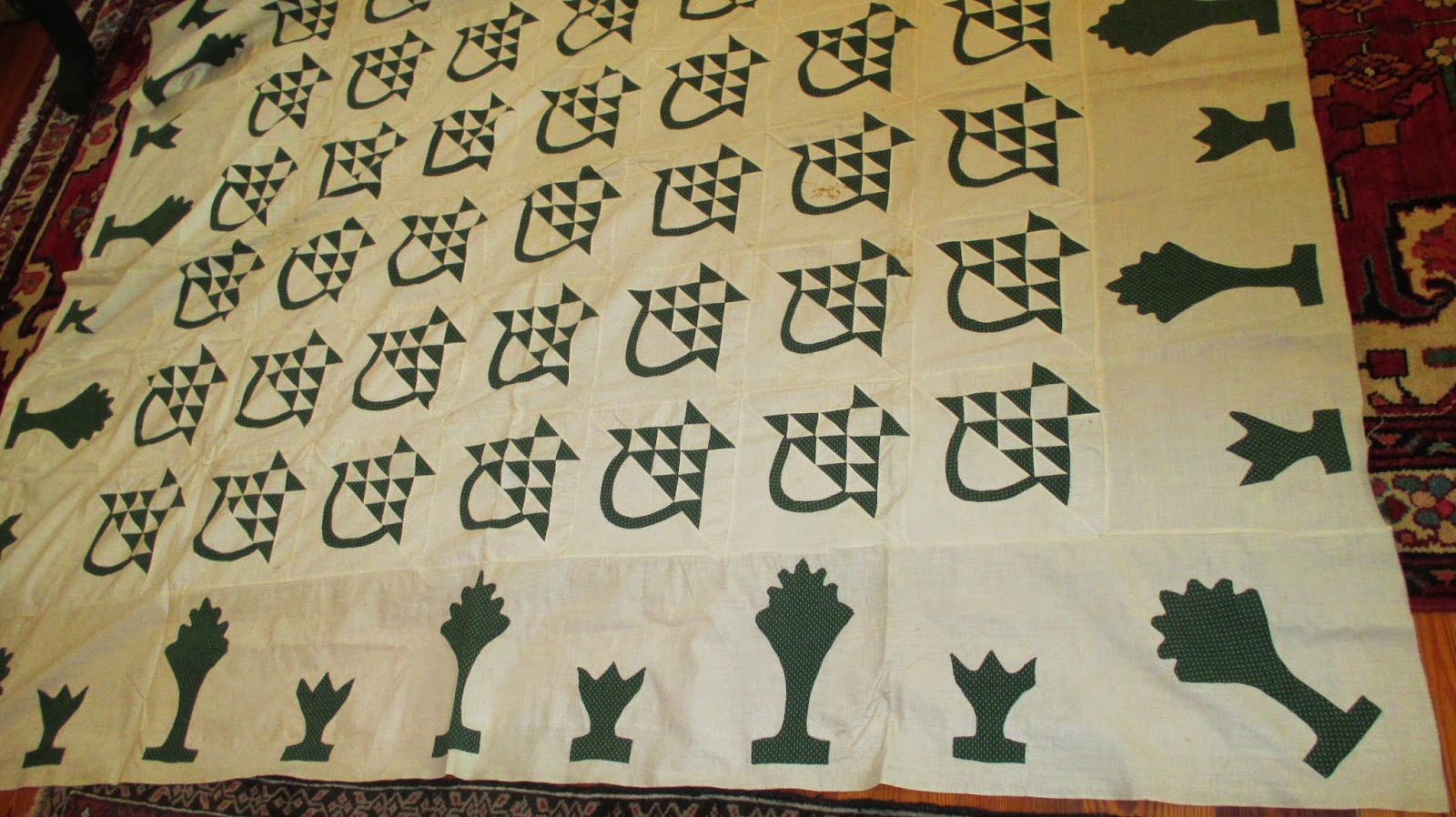Dianne has quite a few 19th c quilt tops with green as a predominant color. Certain 19th c greens are called "Poison" Greens as explained in Barbara Brackman's post
here.
This unusual two color quilt's baskets have a 90 degree handle. The solid green was more blue green.
This basket looks like the 1850 pattern no. 662.5 in Brackman's "Encyclopedia of Pieced Patterns". Note the base of the basket is a whole square not a half square.
This quilt had a great border of tree shapes. No two trees were the same!
This Carolina Lily variation has a more yellow, or Poison, green in the border and a blue green in the pieced block.
Here you can see the two different greens, as well as the interesting checkered floral print.
This block is almost a snowball variation, but set on point and with alternate blocks it loses the balls.
Various yellow greens were used with the double pinks for the blocks. The border is a more blue green print.
A row of green pops in this Blazing Star center. The setting blocks have been removed; the needle holes and bits of thread were still evident in the seam allowances.
I do love all those polka dots!
Here are some interesting articles on green dyes in the 19th c.:
http://janeaustensworld.wordpress.com/2010/03/05/emerald-green-or-paris-green-the-deadly-regency-paint/
http://www.theguardian.com/books/2010/feb/20/arsenic-century-james-whorton-review
http://www.nytimes.com/2010/04/05/arts/05iht-design5.html?pagewanted=all&_r=0
http://hyperallergic.com/133571/fatal-victorian-fashion-and-the-allure-of-the-poison-garment/
Snippets of fabric samples illustrate the article at
http://info.fabrics.net/madder-minerals-and-indigo-cotton-dyeing-in-the-18th-19th-century/






































